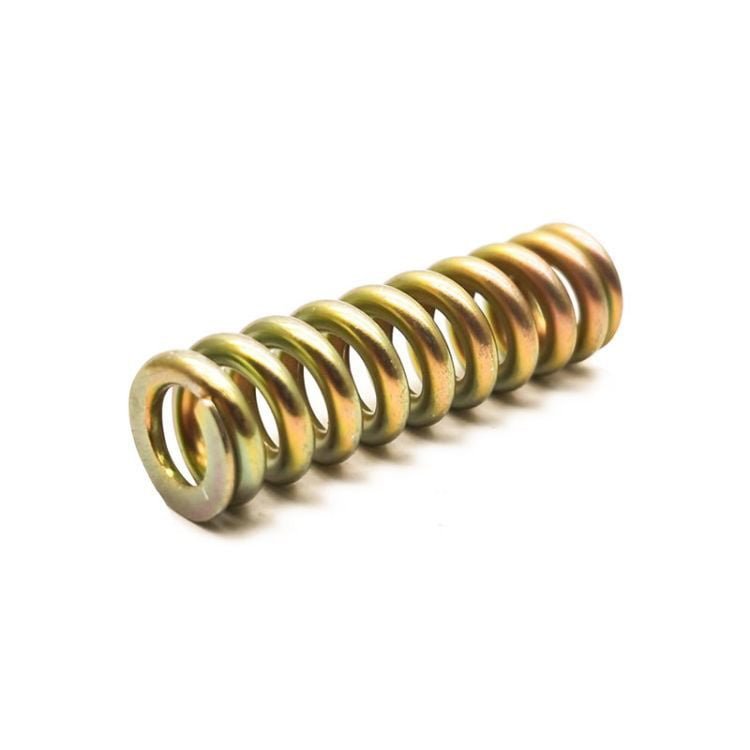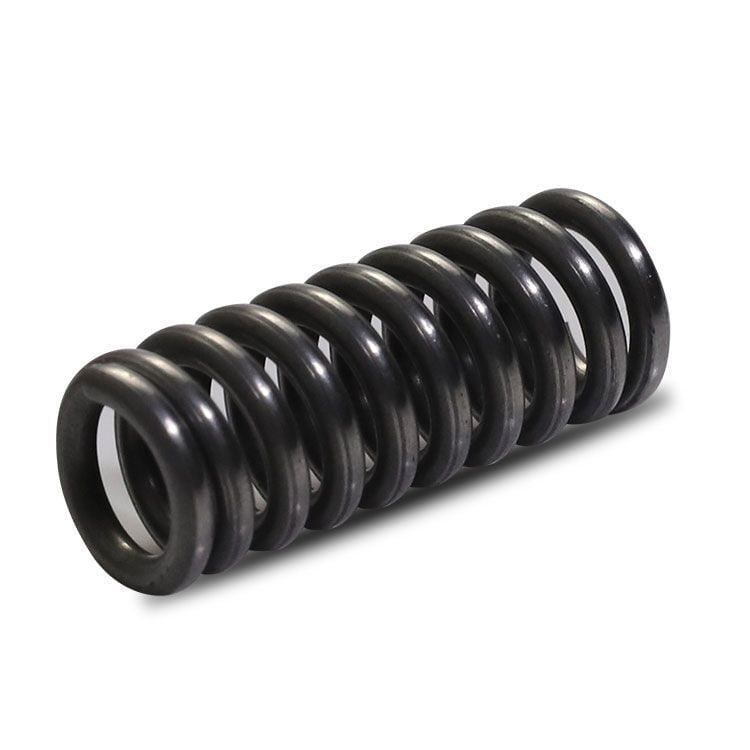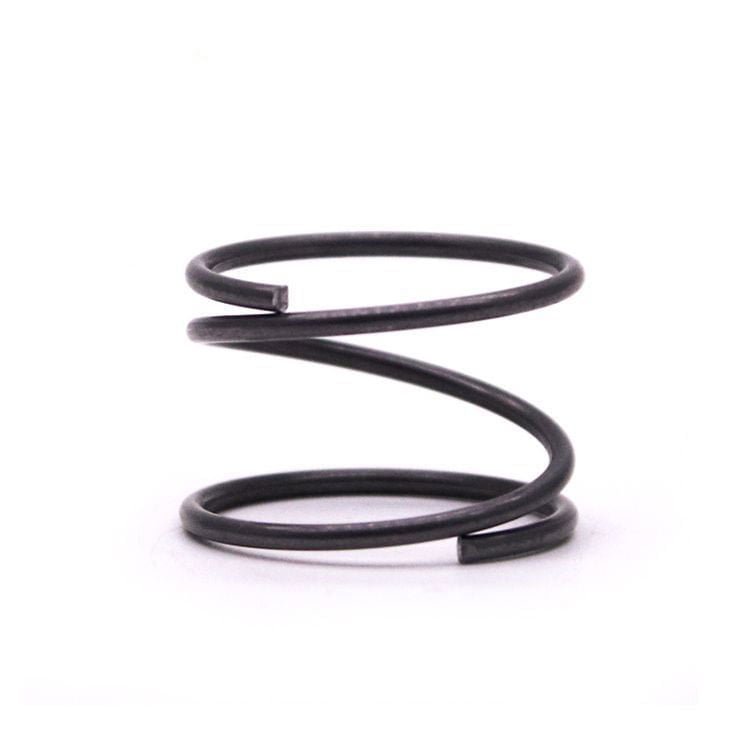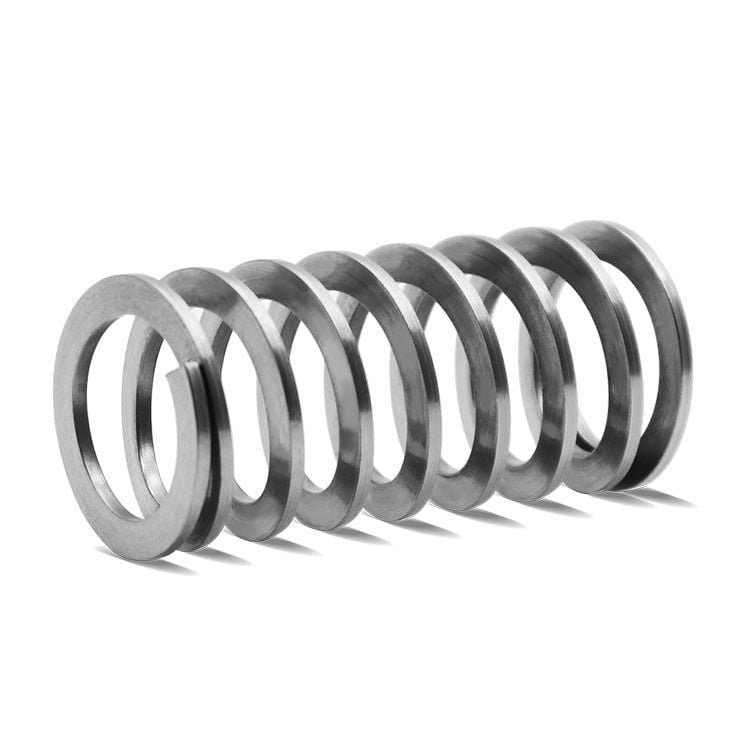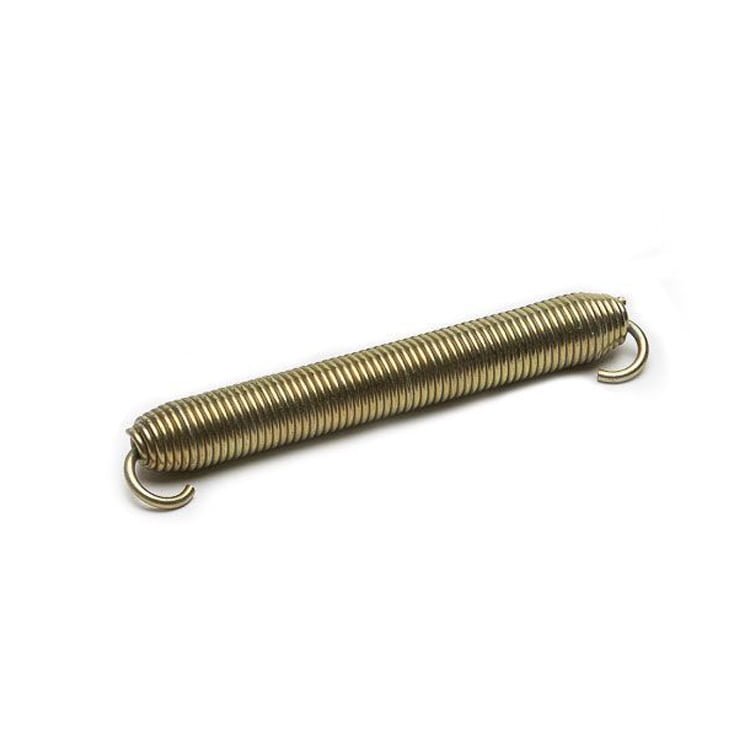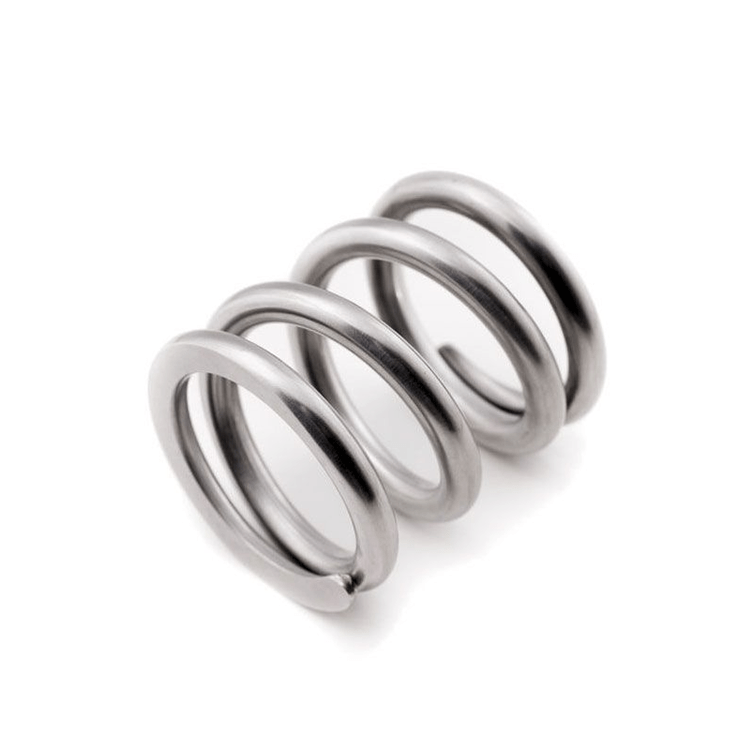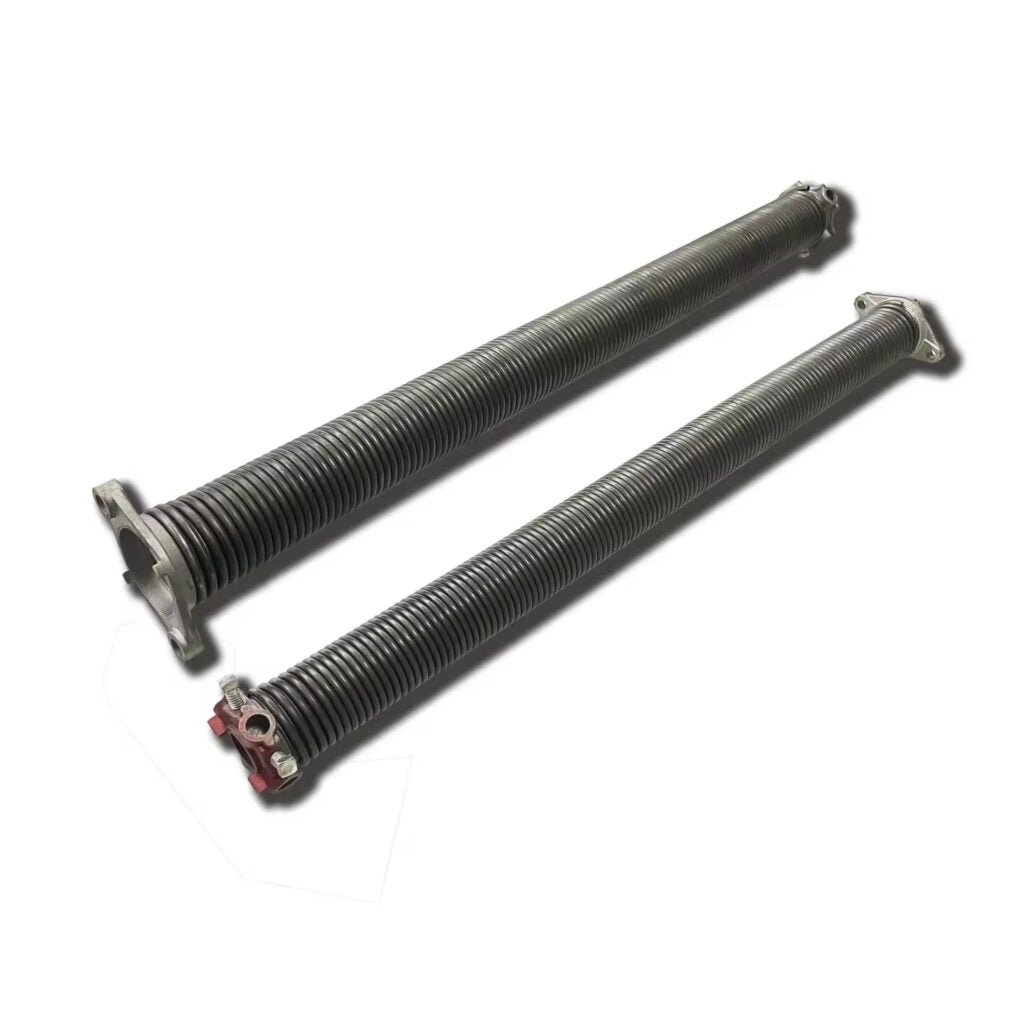Spring retaining ring
Spring retaining rings are fasteners supported by the elastic characteristics of springs. They are mainly used for the fixation of parts to prevent them from moving randomly. Spring retaining rings are retaining rings made of elastic materials. After heat treatment, they have higher hardness, strength and elasticity, and may undergo surface electroplating or oxidation treatment to improve anti-corrosion performance.
The material of the spring retaining ring is spring steel. This material has high strength, hardness, elasticity and hardenability, and is suitable for manufacturing spring retaining rings.
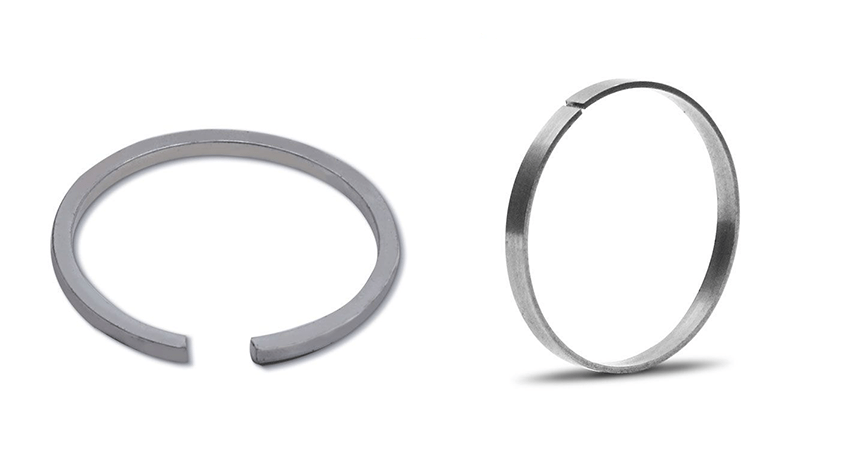
The main function of the spring retaining ring is axial fixation to ensure that the parts do not move or fall off at the predetermined position. Under high pressure or high load conditions, the spring retaining ring can maintain a stable fixing effect and prevent system failure.
Application: Spring retaining rings are widely used in various mechanical equipment and structures, such as the fixation of components like bearings, gears, couplings, etc. They can ensure that these components remain stable during high-speed operation or under heavy loads, improving the reliability and service life of the equipment.
Installation: The installation of spring retaining rings usually requires the use of special tools, such as circlip pliers, etc. During the installation process, it is necessary to ensure that the retaining ring is correctly installed at the predetermined position and its elastic force can fully function.
The following key factors need to be considered when choosing the suitable spring retaining ring:
- Size and Specification: Firstly, accurately measure the shaft diameter or hole diameter of the installation part to determine the inner and outer diameters of the spring retaining ring. A size mismatch may lead to an unstable installation or inability to install.
- Load Requirements: Select based on the load conditions borne by the applied mechanical equipment during operation. When the load is large, it is necessary to choose snap ring with higher strength and greater thickness.
- Working Environment: Consider environmental factors such as temperature, humidity, corrosiveness, etc. In harsh environments, such as high temperature, high humidity or highly corrosive environments, spring retaining ring materials with corresponding corrosion resistance and high temperature resistance properties should be selected.
- Installation Space: Evaluate the available space for installing the spring retaining ring. If the space is limited, it may be necessary to choose a retaining ring with a smaller size or a more compact structure.
- Cost Budget: The prices of spring retaining rings of different materials, specifications and brands are different. Under the premise of meeting the performance requirements, it is necessary to choose the appropriate product according to the budget.
Matters needing attention:
- When choosing spring retaining rings, it is necessary to select the appropriate material, specification and type according to the specific application scenarios and requirements.
- During the installation and usage process, attention should be paid to the elasticity and fixing effect of the retaining ring to avoid the failure or damage of the retaining ring due to improper installation or excessive usage.
- Regularly inspect and maintain the spring to ensure it is in a good working condition, and discover and handle potential problems in time.
| Main difference | Spring retaining ring | Common retaining ring |
| Working principle | The connection between the shaft and the bearing is achieved through the elastic deformation of the material. When the spring retaining ring is installed on the shaft, it will closely fit on the shaft by using its elastic force, thereby preventing other parts from moving along the shaft. | A mechanical structure is adopted to achieve the connection. Usually, the retaining ring is fixed on the shaft through fasteners such as bolts and screws, thereby playing the role of positioning and locking. |
| Characteristic | Easy to install, highly practical, compact in structure, relatively inexpensive, and capable of withstanding certain vibrations and impacts | The structure is more stable, capable of withstanding greater stress and vibration, and the connection is more precise and reliable |
| Adaptive scenarios | Low-speed and small-sized equipment with not too high requirements | Occasions with higher requirements for connection, such as in applications of mechanical equipment with high-speed rotation, automotive hubs, etc. |
Spring retaining rings are an important type of fastener and play a significant role in mechanical equipment and structures. Through the explanation of the above content, it is hoped that it can assist you in choosing the appropriate spring retaining rings for specific application scenarios to ensure the normal operation and safety of mechanical equipment.





